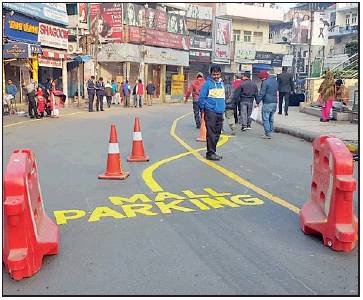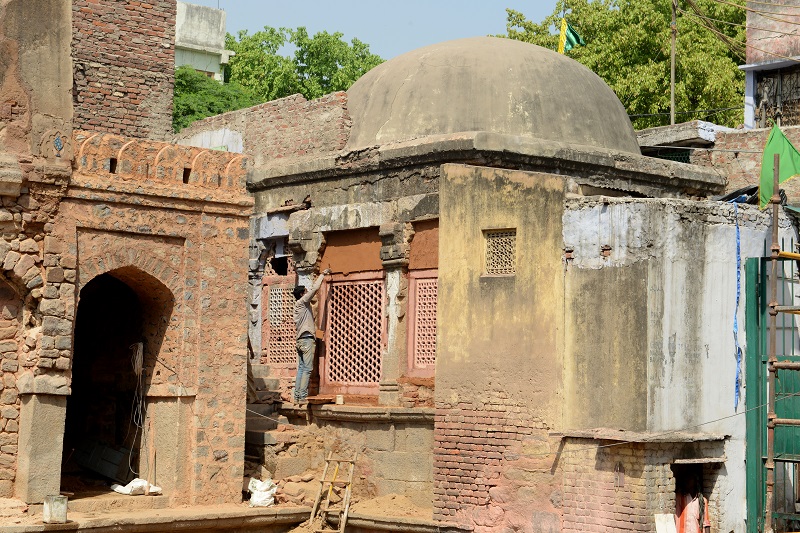Delhi: K
This is a collection of newspaper articles selected for the excellence of their content. |
Contents |
Kalu Sarai: IIT/ MBBS coaching
The Times of India, Sep 30 2015
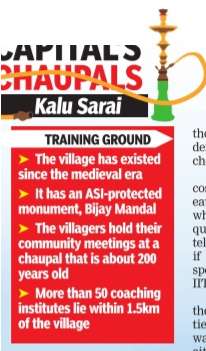
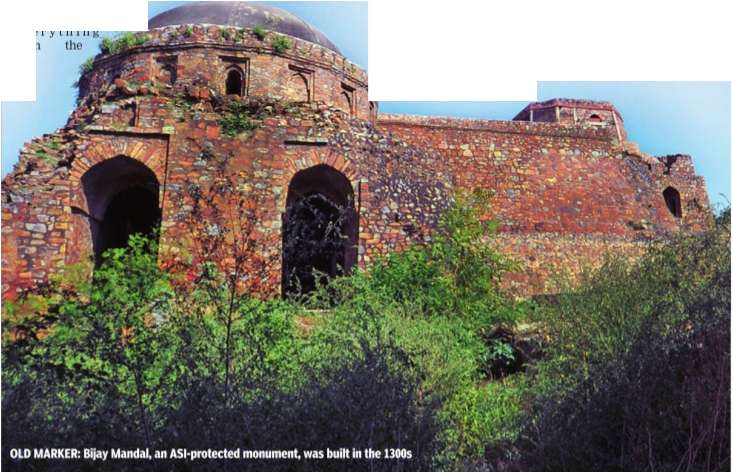
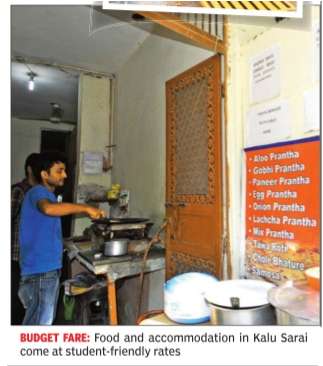
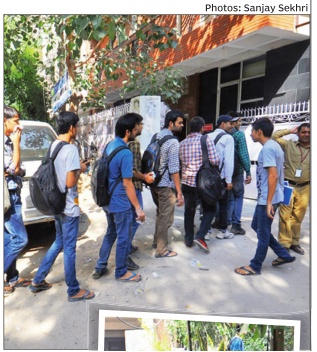
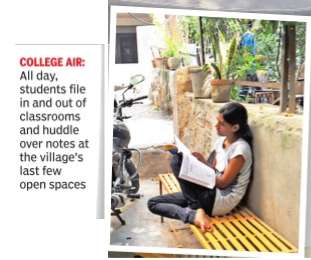
Richi Verma & Risha Chitlangia
Once sleepy Kalu Sarai has become a nursery of doctors and engineers
There is Kota, of course, but thousands of aspiring doctors and engineers now choose to get their coaching closer home in Kalu Sarai, a village in south Delhi. At the Hauz Khas Metro station outside the village, every second commuter carries a bag emblazoned with the name of one of the 50-odd coaching institutes that have sprung up here since the early 2000s. Locals say FIITJEE, a chain of coaching institutes, was the first to set up shop in the village.
For such an old village-its chaupal or space for public meetings is 200 years old, and a fortification called Bijay Mandal has been around since the time of that eccentric sultan, Mohammad bin Tughlaq--Kalu Sarai's rapid transformation seems remarkable, but it's down to plain eco nomics. Students like it because it offers everything from the teaching to accommoda C tion and food at reasonable rates. And the landlords are happy because more students mean more earnings.
With the students out C numbering the locals during daytime, the place has a college atmosphere. Groups of boys and girls file in and out of classrooms, huddle over notes or hang around the many eating joints. But away from the institutes, in the heart of the village, life continues at its old, sedate pace with the elders still thrashing every issue from domestic problems to national politics at the chaupal.
The locals remember the quiet days of the 1980s and before fondly . It was a spacious village with many barren patches, they say , but now every inch of land has been built over to earn rent. Be sides the coaching centres, there are stationers, cyber cafes, eateries and tall box like buildings to serve as hostels and paying guest accommodation for the students.
Gurjeet Singh, a local, said, “The first coaching institute came up around 2000, and because the village is close to IIT and affordable, more and more students started coming. Many of the outstation students stay in the village through most of the year, paying Rs 3,000-Rs 7,000 a month, depending on the facilities they get.
A filling meal of parathas costs just Rs 30 at the village eateries, and the “aunties“ who run the kitchens are quite accommodating. “We tell aunty or the caretaker if we want to eat something special,“ said Manish, an IIT aspirant.
Sikhs and Muslims are the two biggest communities in the village and a gurdwara and a mosque stand on either side of the chaupal.Tughlaq's Bijay Mandal provides a backdrop to the village, a lone, neglected monument. But for the residents of Kalu Sarai it is now the only break from the bustle inside. Conserved only in name and overgrown with grass, creepers and small trees, it has stood invincible in the path of change and the coaching institutes.
Kamla Nagar
2019: Pedestrianisation
Vibha Sharma, Dec 24, 2019 The Times of India
Four radial roads in north Delhi’s Kamla Nagar are ready to welcome pedestrians from Tuesday. While only pedestrian movement will be allowed on Kolhapur Road, the three other roads connecting to Spark Mall at Bada Gol Chakkar — Agrasen Marg, Mandelia Road and Gali No. 7 — will see vehicular traffic but surface parking will be banned on all these stretches.
All vehicles will be shifted to the underground paid parking lot at Spark Mall, which has space for 828 vehicles. “Excess vehicles will be shifted to adjacent roads where parking areas are being earmarked,” said Ira Singhal, the deputy commissioner of North Delhi Municipal Corporation.
The civic body, which is implementing the pilot project in association with other departments on the direction of the Supreme Court, has completed an exercise earmarking pedestrian areas, no-parking zones and a path to reach the multilevel parking in Spark Mall. “We have drawn yellow lines on the roads and used bollards to separate the portions that can be used by pedestrians and vehicles,” said Singhal.
The mall, built in 2013, barely sees 40-45% occupancy on a daily basis. “We want to prevent the traders and the shoppers from leaving their cars haphazardly by the road or in the surrounding areas. This will ensure smooth traffic in the market and get us enough space to create alleys for utilities, greenery and pedestrian pathways,” said Singhal.
The Kamla Nagar market, spread over 4 square kilometre, receives a footfall of 12-15,000 on weekdays and 25-30,000 on weekends.
The corporation also plans to organise the hawkers encroaching upon the pavements, said Anuj Malhotra, a knowledge partner with the Union home ministry who is assisting the corporation with the project. The plan is to give them uniform and designated spots so that there is no chaos in the market and pedestrians can walk freely on the pavements, Malhotra said. “In the next seveneight days, benches, lamps, dustbins and planters will be installed on either sides of the carriageway for the convenience of pedestrians,” he added.
The Supreme Court is monitoring the implementation of Delhi Maintenance and Management of Parking Places Rules, 2019. Few months ago, it had directed Environment Pollution (Prevention and Control) Authority and the municipal bodies to implement the rules as pilot projects in south Delhi’s Lajpat Nagar, north Delhi’s Kamla Nagar and east Delhi’s Krishna Nagar. Various other authorities, including the traffic police, are also part of the project.
At Lajpat Nagar III, officials have installed signage and developed walkways in residential neighbourhoods. The project will be in place by Wednesday while the same will take off in Krishna Nagar next month.
Karbala (near Jor Bagh)
Karbala dispute must be settled: Jor Bagh
Maria Akram & Somreet Bhattacharya TNN
some residents of Jor Bagh complain “Every fortnight there is a programme here and the police are perpetually on guard. In 2012, when riots broke out, our cars were vandalized. These religious gatherings bring thousands from elsewhere,” complained Payal, a. In fact, in January 2012, the residents of BK Dutt Colony, opposite Jor Bagh, had protested and blocked Safdarjung flyover over a gate to the shrine which opened into their colony.
therefore, Jor Bagh is periodically under siege. Hundreds of policemen and Rapid Action Force personnel barricade the area, restricting entry. This leaves the residents feeling harassed. Entry from Aurobindo Marg to Jor Bagh is often restricted and the residents can enter from Lodhi Road.
When the Karbala grounds deck up for Nauchandi Jummerat, the Tazia procession starts from Walled City and ends at Karbala in Jor Bagh.
“They are expanding and encroaching on public land. The area has become trouble for all the residents. No civic agency is demarcating the land despite court orders,” says Rakesh Kukreja, a shopkeeper in the area, adding that there could be peace if the dispute was settled.
Karbala and Dargah Sha-e-Mardan are in the middle of Jor Bagh and BK Dutt Colony.
The eight acres of land owned by the Waqf Board also houses the Rajdhani nursery. The situation in the area worsened in 2012 when the nursery owner and members of the Anjuman-e-Haidri committee, which looks after the complex, clashed.
The committee members alleged that the lease for the nursery expired in 2000 but the owner is not vacating the land.
“The nursery owner has lost the case both during arbitration and in Saket court. But despite orders, he’s not vacating the premises. Every time we ask him to vacate, he sends goons. It’s a simple case of land-grabbing but he has turned it into a Shia-Sunni issue,” said Rais Abbas, vice-president, Anjuman-e-Haidri committee. The committee members said there are 112 graves in the area, including some on the nursery land.
Nursery owner Wasim Khan says the matter is in high court and the other orders have been quashed. “Since 1976, we are operating from here. There are no graves in this area, it’s a myth. We are not able to work, and whenever there is a gathering, people destroy our plants and property,” he alleged.
Khairpur village
Buried in history
R. V. SMITH
The standoff between the management of the Jorbagh Karbala complex and Residents’ Welfare Agency has its genesis in the events of 1947 when refugees from Punjab and Sindh were settled in the complex that includes the Dargah Shah-e-Mardan. Dr. Khaliq Anjum, former head of the Anjuman Taraqqi Urdu (Hind), New Delhi, has come out with a book in Urdu on the dargah and other mausoleums in Mauza Khairpur, which throws interesting light on Delhi’s most venerated Shia burial ground
Up to now it was widely believed that Dargah Shah-e-Mardan dated to the time of Nawab Qudsia Begum, wife of Emperor Mohammad Shah Rangila and mother of Ahmed Shah, his son and successor, in the mid-18th century. But in the book titled Dilli ki Dargah Shah-e-Mardan , Dr. Anjum has traced its existence to 1543-44, which means to the time of Sher Shah and the Sur dynasty. That should make it one of Delhi’s oldest cemeteries, after the smaller graveyards of the 12th to 15th centuries.
The author says that once while accompanying Lal Bahadur Shastri in a car, he persuaded the then Union Minister to step down and have a dekko of the area devastated by the refugee influx. Shastriji was astonished by the scene that unfolded itself. Medieval marble graves had been uprooted with impunity to provide shelter to the newcomers to the Capital. Even the shrine of Hazrat Ali (Shah-e-Mardan) had been severely damaged, what to talk of other shrines and tombs. The boundary wall had been pulled down and new structures had come up all around. Shastriji gave orders for the restoration of the wall ( chardewari ) and repair of prominent graves. At one time the Jorbagh complex covered several acres, right up to the tomb of Safdarjang, which is now more or less isolated from it. But the 1947 exodus reduced the area greatly with encroachments, both governmental and private.
Dr. Anjum, along with Col. Bashir Hussain Zaidi, surveyed the complex and with help from other knowledgeable people has listed the monuments with a thoroughness that is worthy of appreciation. There are photographs in the 115-page book (brought out by the Anjuman Taraqqi Urdu), and the sources cited include Sir Jadu Nath Sarkar ( Fall of the Mughal Empire ), W. Franklin ( History of the Reign of Shah Alam ) and the list of Muhammadan and Hindu Monuments (VOL II, Calcutta, 1916).
Mahabat Khan’s body was brought from the Deccan while Safdarjang’s body was brought from Faizabad and buried here. Then there is the grave of the mysterious Mah Khanam and the tomb of Justice Murtaza Fazal Ali. Other graves mentioned are those of Ashraf Beg Khan, Mahaldar Begum, Mehr-ul-Nissa Begum, Wilayati Begum, Karbali Begum, Mirza Mohsin, Sharful Nissa Haji Begum, Saadat Khan, Qasim Ali Khan, Najaf Ali Khan, Nawab Sayyid Sultan Mirza, Sayyida Khatoon, Javed Khan, Maulvi Sayyid Ali, Nawab Mubarak Mahal Begum, Nawab Ibrahim Beg and many others of note and fame.
Besides, mention is also made of the various masjids, including the ones built by Qudsia Begum and Zeenat Begum, the Majlis Khanas, Bibi Fatima-ki-Chakki, Dargah Arif Ali Shah, Qadam Mubarak (footprints of Ali), Mehr-ul-Nissa Begum-ki-Chaukunthi and the royal qabristan.
About Qudsia Begum it is said that she was greatly influenced by Nawab Bahadur Javed Khan, who was murdered at the instigation of Nawab Safdarjang. The queen started life from humble beginnings as a dancing girl and before her conversion was known as Udham (aka Uttam) Bai. The begum was accused of many things but at the same time respected for being a great patron of women and the poor ( Reham-dil Begum ).
The book is quite a treasure house of information on a place associated in general perception only with tazias , and perhaps could draw more readers with an English translation.
R. V. SMITH
Dr. Anjum, along with Col. Bashir Hussain Zaidi, surveyed the complex and with help from other knowledgeable people has listed the monuments with a thoroughness that is worthy of appreciation
Kirti Nagar
2018: 10th best police station in India
Why this city police station ranks among India’s top 10, January 8, 2018: The Times of India
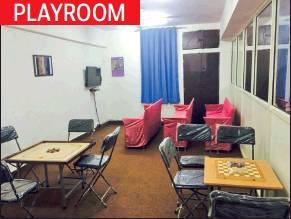
From: Why this city police station ranks among India’s top 10, January 8, 2018: The Times of India

From: Why this city police station ranks among India’s top 10, January 8, 2018: The Times of India
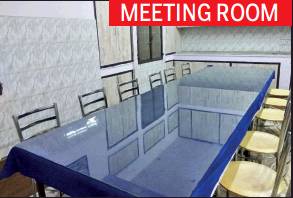
From: Why this city police station ranks among India’s top 10, January 8, 2018: The Times of India
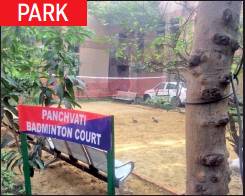
From: Why this city police station ranks among India’s top 10, January 8, 2018: The Times of India
West Delhi’s Kirti Nagar police station has added a new feather to Delhi Police’s cap by bagging a place in the list of top 10 police stations in India. Home minister Rajnath Singh on Saturday evening felicitated the top police stations during the inauguration of a three day all-India conference of police chiefs in Gwalior.
The police station secured the 10th rank after a thorough background check and an exhaustive evaluation process lasting six months. The criteria for selection were available amenities, infrastructure, crime scenario and the conduct and behaviour of police personnel posted there. It is learnt that the examining committee gave the station maximum points on patrolling, discipline and cleanliness.
Appreciating the efforts of SHO Anil Sharma, police commissioner Amulya Patnaik said Kirti Nagar will be considered a model police station and best practices replicated across other stations in the capital.
Dependra Pathak, Delhi Police chief spokesperson, said that the police station has been able to maintain law and order, apart from having amenities like free Wi-Fi for the public, a cafeteria, purified water and coffee dispensers, quarantine rooms, signboards, clean washrooms and proper seating arrangements for visitors.
“From the reception to lockups, it has set an example for other police stations in Delhi, which often come under criticism for being unfriendly. Food is available at subsidised rates for policemen as well as the public in the cafeteria,” said an officer.
The Wi-Fi services can be accessed by visitors by registering their ID at the front desk. Apart from an indoor games room, the police station has a badminton court and a gym for policemen. The station also provides newspapers and legal literature in the visitors’ room.
Area residents and businessmen can use the station’s dedicated website (www.pskirtinagar.com) to approach police for help. People can download various verification forms (like for tenants or helps) from the website, apart from lodging complaints with the SHO.
Soon after taking charge, Patnaik had reiterated that policemen needed to give priority to people and their requirements. DCP Vijay Kumar and SHO Sharma worked under special commissioner P Kamaraj for bringing about the change.
“Earlier, the reporting room was an old structure and there was no facility for visitors. There was no space for keeping documents. Also, there was no Sankarman Kaksh (isolation room for questioning of suspects). We made a state-of-the-art facility and built new washrooms. Clean toilets, drainage system and seepage issues were fixed. Beautification was taken up,” a senior officer said.
From fax machines to installing CCTV cameras in the premises, the SHO also made a significant change in the condition of the lockup by providing mattresses, blankets in winters to having a clean and partitioned bathroom.
“On the policing front, the station boasts of wellmaintained registers of medico-legal cases and statements of witnesses in calls, standing orders & circulars and absconders and deserters list. The station has good coordination with other stakeholders, like the area SDM,” an officer added.
Kishanganj
The D'Eremao cemetery
The Times of India, Jul 24 2015
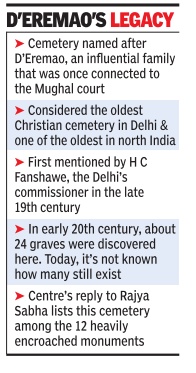
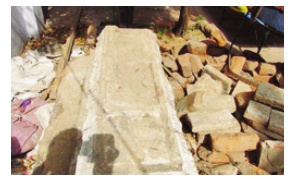
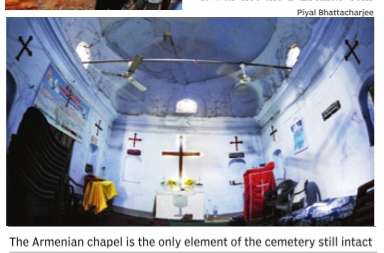
Richi Verma
Delhi's oldest Christian cemetery now exists only in history books. Squatters have wiped away most visible traces of it You could stroll past this monument and still miss it completely . Located in Kishanganj, north Delhi, the D'Eremao cemetery was notified by Archaeological Survey of India (ASI) as a protected monument in the 1920s--a lone signboard still calls it a protected place. But very little of the original monument exists today; the rest have been eaten away by numerous encroachments over the past decades. Historians call it the earliest Christian cemetery in Delhi. Past papers show the site had many Armenian Christian graves from the 1700s. Yet the name D'Eremao nowhere exists at the site, and people who live here don't seem to know anything about the cemetery.Many understand it as the Armenian chapel, which has a board announcing the visit timings. But they all seem to agree that it's been wrongly recognized by ASI as a protected building. The matter is with the Delhi high court where ASI and the residents have been sparring over jurisdiction. In 2007, the high court directed ASI to give the residents a hearing and settle the issue once and for all. Nearly eight years down the line, ASI hasn't succeeded in deciding the issue and encroachments have continued to grow.
When TOI visited the site, access was limited to the chapel. The locals were hostile when we tried to click photographs or ask them questions about the cemetery . “This is a Christian complex, not the cemetery as ASI claims. Even the signage installed by ASI outside the complex is wrong. This is our home and has been so for the last several decades, said Vinod, a resident.
The chapel's interior had huge cracks and it looked like it had been whitewashed not too long ago--visible signs of absolute neglect. There was an Armenian cross and a prayer book placed on the altar--perhaps the only parts of the original monument that still exist.
ASI officials remain firm on evicting all encroachers from the site, but they admit that there has been a huge delay in following the high court's directions. “We gave an eviction notice to all encroachers in 2006, following which they went to high court. The people who have built their homes all around the monument claim it was not the D'Eremao cem etery, but a Christian complex.We, however, have site plans to prove this is our monument under central protection. The graves are clearly visible and the gumbad can be seen by everyone to be from the late Mughal period. These people have built houses over the graves. There are about 60 occupants who need to be evicted.We will be giving them a hearing soon to settle the matter, and reclaim the monument,“ said an ASI official.
Kotla Mubarakpur
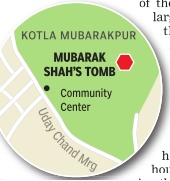
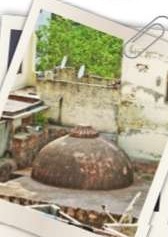
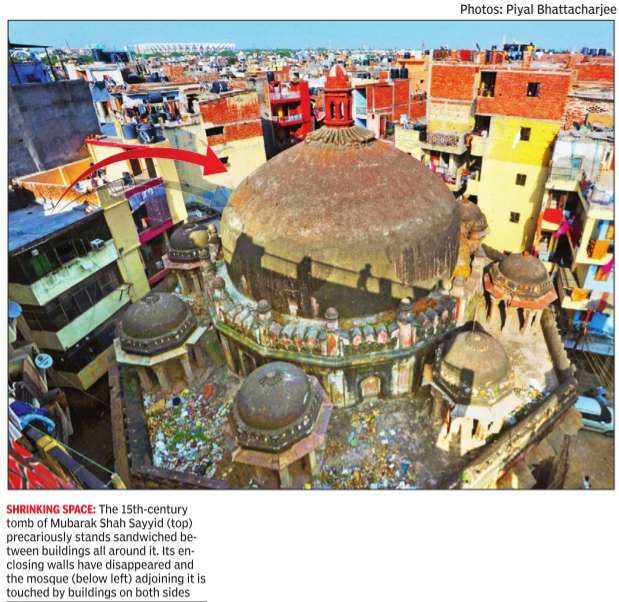
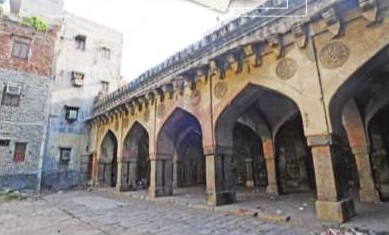
The Times of India, Sep 01 2015
Richi Verma
Kotla Mubarakpur now threatens to eat up founder's final resting place Built in the mid-15th century, Mubarak Shah Sayyid's tomb was the first enclosed garden tomb and the second octagonal tomb in Delhi. The tomb also lent its name to the urban village of Kotla Mubarakpur in south Delhi where it's located. But uncontrolled development and rapid urbanization over the years has resulted in the gradual shrinking of the monument. Other structures close to the tomb like a baoli, the enclosure walls and the western gateway have almost vanished.The tomb itself and the adjoining mosque have become a garbage dump and cow shed, and buildings all around them h av e a l m o s t made them invisible. The tomb and mosque were protected by Archaeological Survey of India (ASI) in the 1950s. Archival ima g e s s h o w t h e tomb stood on a chabutra in an octagonal enclosure until then. The chabutra can no longer be traced, as it was built over in the 1990s.
The Lodhi-era baoli, too, had existed until the 1990s. Built on five levels, the baoli was proof of the existence of a large population in R the area. It no longer exists.
The main tomb is struc turally in a g o o d s h ap e, and the iron fencing erected around it by ASI has stopped the houses from touch ing the structure. But beyond this, ASI can't do much.
“Till 1992, these houses were only hut ments. People started making them pucca houses from mid-1992, and then started build ing additional floors to accommo date growing family needs. Ironically, ASI's 100m prohibited area came into force in 1992. So all these houses were built after the ASI rules came into force,“ said a source. The surrounding buildings have literally dwarfed the tomb today.
Mubarak Shah was the second ruler of the Sayyid dynasty . His tomb is even today considered a good example of octagonal Sayyid tombs, which retained their popularity in the Lodhi and even Mughal times.The facade of the tomb is crumbling at several places and the outer verandah has become a garbage dump. The red bands on the ceiling of the dome chamber have vanished and only traces of incised plaster and ornamentation work can be seen. A few feet away , one has to fight his way through slush and overcrowded houses to get to a narrow entrance partially blocked by construction work.
When you climb over it, you land on an open courtyard where the mosque, which was originally part of Mubarak Shah's tomb complex, stands. The dome of this mosque can hardly be seen, and on both sides of the mosque there are new buildings. Ornamentation work on top of the five arched openings can only be seen in fragments and the courtyard has become a garbage dump. A lone ASI board declaring it a protected monument stands in a corner.
Krishna Nagar
Vibha Sharma, February 4, 2020: The Times of India
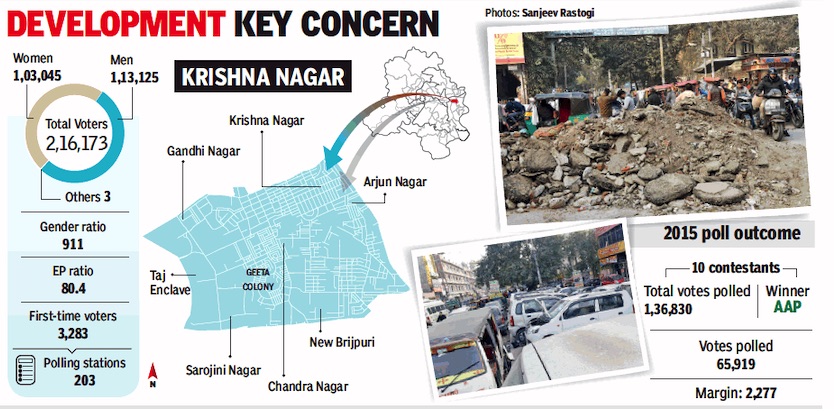
From: February 4, 2020: The Times of India
Oppn plays on voters’ woes, outgoing MLA cites central hurdles
For long a BJP bastion represented by Harsh Vardhan from 1993 to 2013, the Krishna Nagar constituency chose Aam Aadmi Party’s A K Bagga over BJP’s chief ministerial candidate Kiran Bedi in 2015. Bagga was certainly the giant killer of those elections and it will be interesting to see if he can reprise that triumph this year.
It will be a tougher fight because the veteran Ashok Kumar Walia is in the fray on behalf of Congress. The doctor is a four-time winner from the region, thrice from Geeta Colony and once from Laxmi Nagar. BJP has also nominated a medical man, Anil Goyal, who runs the Goyal Urology Centre at Vijay Chowk in Krishna Nagar. He is well known in east Delhi for the medical camps he organises. A few cavilled about his candidature since he lives in Hargovind Enclave and not Krishna Nagar, and Goyal responded, “I work with Krishna Nagar residents every day. Only politically motivated people can make an issue of my residence.”
While residents define all three candidates as accessible, they aren’t too happy about the pace of development in the area. Bansi Lal, member of the market association at Lal Quarter, said, “Kiran Bedi was an outsider against insider Bagga in 2015. We voted for the insider and expected him to work with zeal in resolving our core problems, but this did happen. For two-and-a-half years, we have been requesting the MLA in vain to look into the water logging at Ghondli Chowk. And for a year, the water supplied by Delhi Jal Board hasn’t been satisfactory.”
Bagga, for his part, said, “We lived up to people’s expectation despite the hurdles created by the central government and the lieutenant governor. We got a lot of roads constructed, installed 1,000 CCTV cameras and provided free WiFi in Geeta Colony area.” He admitted that water quality was indeed poor, but claimed the problem was leakage from ageing, eroded sewage lines Many others commended AAP for concentrating on other parts of constituency rather than just Krishna Nagar. “Construction of a road from Jheel to Shamshan Ghat, which was pending for a long time, was completed in Bagga’s tenure,” said S C Gupta, a resident of Geeta Colony. “Roads were also made in Geeta Colony and, unlike other parties, AAP is more particular about addressing residents’ issues.”
When TOI visited the constituency last week, road construction was under way in Jheel Chowk, Krishna Nagar, Geeta Colony and some other places. Near the damaged Jheel Chowk Road opposite Chand Mohalla, Naresh Kumar complained, “Around 15 days ago, the road was dug up to be repaired. Since then it has been in this state.”
Encroachment on the main roads of Rashid Market, Khureji Khas and Jagat Puri is increasing day by day. “Though this is not a problem that can be solved by the MLA, the pace of commercialisation and encroachment is increasing here,” noted local resident Ejaz Ahmed. “I think all elected representatives need to intervene on this.”
The locals also said that the tussle between the East Delhi Municipal Corporation and the AAP government over funding adversely affected the sanitation in east Delhi areas. “We saw several strikes by sanitation workers in the past five years. Garbage was not cleared for 4-7 days,” said B S Vohra, president, Federation of East Delhi RWAs. “Despite paying property tax, we were forced to live in unhygienic conditions simply because there is no consensus between two different political parties heading the state government and the municipalities.”
Kucha Pati Ram
Kuremal's Qulfi
The Times of India, Oct 24 2015

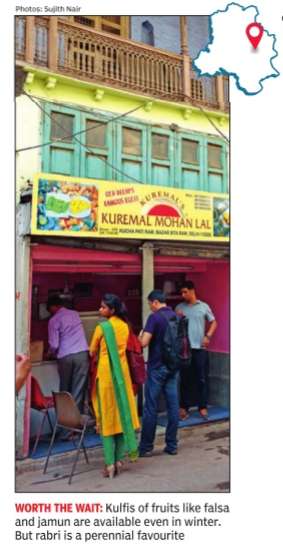
Sujith Nair Indira loved rabri, Vajpayee liked anaar. With 50 flavours at Kuremal's, decision-making is hard
It takes a heritage walk to reach Kuremal's Kulfi in Kucha Pati Ram, a bylane lined with havelis bearing intricate woodwork, rem nants of a once-thriving Sitaram Bazar. This is the place -not far from Chawri Bazar Metro Station -that churns out Old Delhi's favourite kulfi, over 50 variants on last count, without which no meal seems complete. Kuremal's sons, Mohan Lal and Mahavir, carry on the legacy of their father from their respective shops. Kuremal, a village boy from Haryana's Jhajjar district, came to Delhi in the early 1900s to assist his elder brother, who sold ghee in Sitaram Bazar. The duo soon started making matka kulfi, frozen with ice produced in the Baraf Khana in Subzi Mandi.
Mohan Lal, 75, says that back then kulfi making was quite a tough job and his father and uncle offered three basic variants -rabri, aam and sharbat. The matkas were filled with condensed milk or sharbat and their earthen lids sealed with dough made from wheat. These were then lined up in a brass vessel, which could hold up to 200 of them, and frozen using ice and shoora -a salt sourced from Rajasthan's Sambhar Lake. The kulfis were then scooped out and served in dhak ka patta, to be eaten using a bamboo stick. Plastic donas have now replaced dhak leaves but the bamboo sticks, made in some katras of Old Delhi, are a must as plastic spoons can't breach the denser kulfi made from buffalo milk.
Sitting on a cot in the first floor of his godown, Mahavir, 64, says, “Rabri kulfi is my favourite,“ echoing his elder brother's choice in a strong Haryanvi accent, even as a dubbed version of the Nicolas Cage-starrer Con Air plays on TV in the background.
Festivals mean good business, especially events like Ramlila.
Mahavir says they served kulfi at three Ramlila venues this time, including the one near Red Fort, where his brother also had a stall.
Mohan Lal says their experiment with fruit kulfis started in the 1970s when they got a catering job from a big business family which wanted custard apple kulfi. A small opening was made on the top of custard apples, 500 of which were flown in from Hyderabad, and its contents extracted delicately. The fruit was then filled with rabri, sealed with dough and frozen.
Now, they replicate the same technique with mangoes, which are deseeded and filled with mango kulfi. Once frozen, the fruit is peeled, sliced and served -thus, one gets a bite of the mango before savouring the aam kulfi.Apples, too, are stuffed similarly . Mohan Lal says deep freezers have helped improve the shelf life of seasonal fruit like falsa and jamun, kulfis of which are served even in winter.
Thanks to Kuremal's legendary kulfis, his sons have got invites to serve the high and mighty over the years. “While Indira Gandhi loved rabri kulfis, Atalji (Atal Bihari Vajpayee) had a taste for anaar,“ says Mohan Lal, listing some of their famous clientele.
With 20-25 flavours available at any given time of the year, it's not easy for kulfi lovers to zero in on a favourite. I've found mine, a seasonal fruit, but will not name it for a selfish reason!
